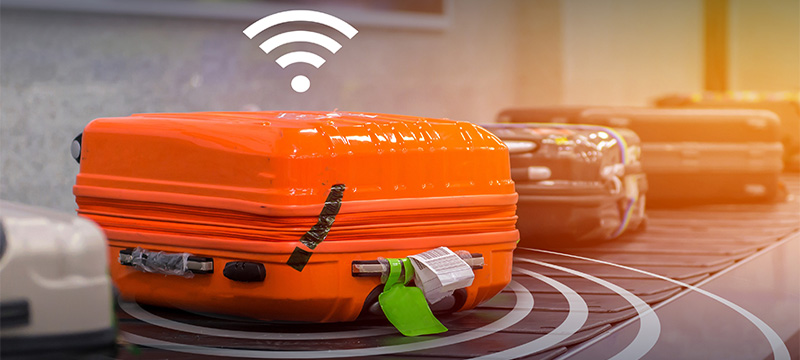
The aviation industry is undergoing a significant transformation, driven by the ever-increasing demand for air travel and the need to improve efficiency, security and passenger experience. At the forefront of this change is the concept of Smart Airports, which leverage the power of the Internet of Things (IoT) to create a digitally connected and intelligent ecosystem.
Global passenger traffic is projected to reach 8.2 billion by 2037, according to the International Air Transport Association (IATA). This surge puts immense pressure on existing airport infrastructure, leading to:
IoT bridges the physical and digital worlds by connecting a network of intelligent devices embedded with sensors and actuators. These devices collect and transmit real-time data on various aspects of airport operations, enabling:
i. Enhanced Passenger Experience
Real-time Flight Information: Passengers receive personalized updates on flight status, gate changes and baggage carousel assignments through mobile apps. Data from sensors on gates and baggage handling systems provide accurate wait times and reduce anxiety.
Seamless Navigation: Indoor positioning systems (IPS) using Wi-Fi or Bluetooth Low Energy (BLE) help passengers navigate the airport with ease, guiding them to gates, restrooms and amenities.
Automated Check-in and Security: Facial recognition and RFID tags in passports and boarding passes enable self-service kiosks and automated security gates, minimizing queues and speeding up processing times.
ii. Optimized Operations
Predictive Maintenance: Sensors on critical infrastructure like HVAC systems, baggage belts and escalators monitor performance and predict potential failures. This allows for proactive maintenance, minimizing downtime and disruptions.
Resource Management: Real-time data on energy consumption, passenger flow and occupancy in different areas helps optimize resource allocation. For example, lighting and temperature adjustments in underutilized areas can lead to significant energy savings.
Improved Baggage Handling: RFID tags on luggage enable real-time tracking throughout the journey, reducing lost and misplaced baggage incidents. This not only improves passenger satisfaction but also minimizes costs associated with baggage handling.
iii. Heightened Security
Smart Surveillance: A network of intelligent cameras with video analytics capabilities can detect suspicious activity and potential security threats. Integration with facial recognition systems further enhances security measures.
Environmental Monitoring: IoT sensors can monitor air quality, noise levels and temperature in the terminal, ensuring a safe and comfortable environment for passengers and staff.
The vast amount of data collected by IoT devices needs to be analyzed and interpreted to unlock its true potential. Advanced analytics platforms leverage artificial intelligence (AI) and machine learning (ML) algorithms to:
Identify patterns and trends: Analyze passenger flow patterns to optimize terminal layouts and staff deployment.
Predict future events: Forecast flight delays, baggage handling bottlenecks and potential security risks based on historical data and real-time information.
Generate actionable insights: Provide airport management with data-driven insights to make informed decisions regarding resource allocation, infrastructure upgrades and passenger services.
The widespread adoption of IoT in airports necessitates robust security measures to protect sensitive passenger data and ensure the integrity of airport operations. Implementing strong encryption protocols, access controls and regular security audits are critical to mitigate cyber threats. Additionally, ensuring compliance with data privacy regulations like GDPR and CCPA is crucial for building passenger trust.
The integration of IoT in airport infrastructure is revolutionizing the passenger experience, operational efficiency and security within airports. As sensor technology continues to evolve and data analytics capabilities improve, we can expect even more innovative applications of IoT in the future. Airports that grip this digital transformation will be well-positioned to navigate the ever-changing demands of the aviation industry.
If you need any services, drop us a mail at Rohitkumar.Singh@gmrgroup.in or get in touch with us at +919717199753.